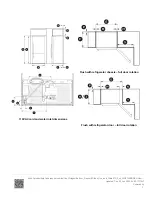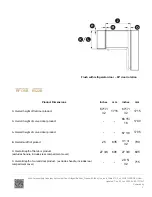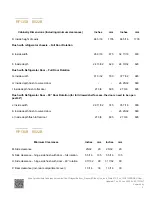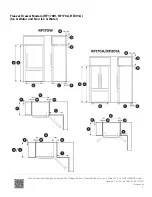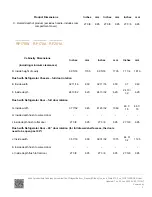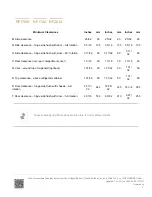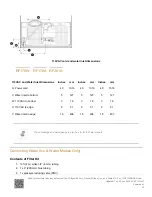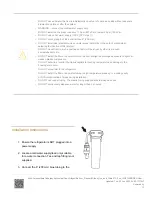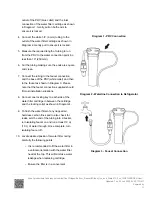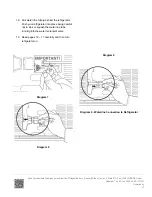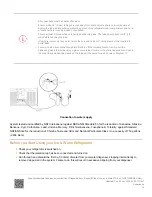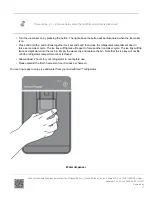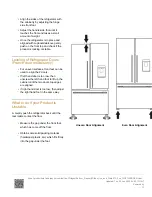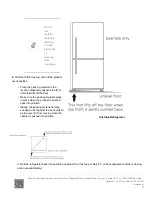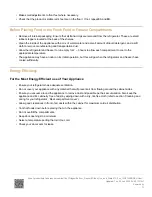
• All connections must be checked for leaks.
• Ensure white 1⁄4” (6 mm) tubing is routed away from sharp objects, sharp corners (beware of
kinking the tube as this will stop water flow), clear of the refrigerator rear compartment and not in
a location where it can be kinked or squashed.
• Ensure all push-fit connections are firmly pushed into place. The tube should push in 5⁄8” (16
mm) before reaching the stop.
• If tubing is removed at any point, re-cut the end and re-insert. Tubing must be fully inserted to
avoid leaks.
• To remove tube from connection points first turn off the isolating faucet. Gently push the
dispensing pad a few times using a glass or container to remove the static line pressure. Push in
the collet firmly while pulling back on the tubing at the same time, as shown in Diagram 10.
Connection to water supply
System tested and certified by NSF International against NSF/ANSI Standard 53 for the reduction of Asbestos, Atrazine,
Benzene, Cyst, Carbofuran, Lead, Lindane, Mercury, P-Dichlorobenzene, Toxaphene & Turbidity; against Standard
NSF/ANSI 42 for the reduction of Chlorine Taste and Odor and Nominal Particulate Class I to a capacity of 750 gallons
(2,838 liters).
Before you Start Using your Ice & Water Refrigerator
• Check your refrigerator is switched on.
• Check that the isolation tap has been connected and turned on.
• Run through and discard the first 3 qt (3 liters) of water from your water dispenser, stopping intermittently to
remove trapped air in the system. Failure to do this will result in excessive dripping from your dispenser.
Updated: Tue, 02 Jun 2020 23:55:17 GMT
Powered by
16

